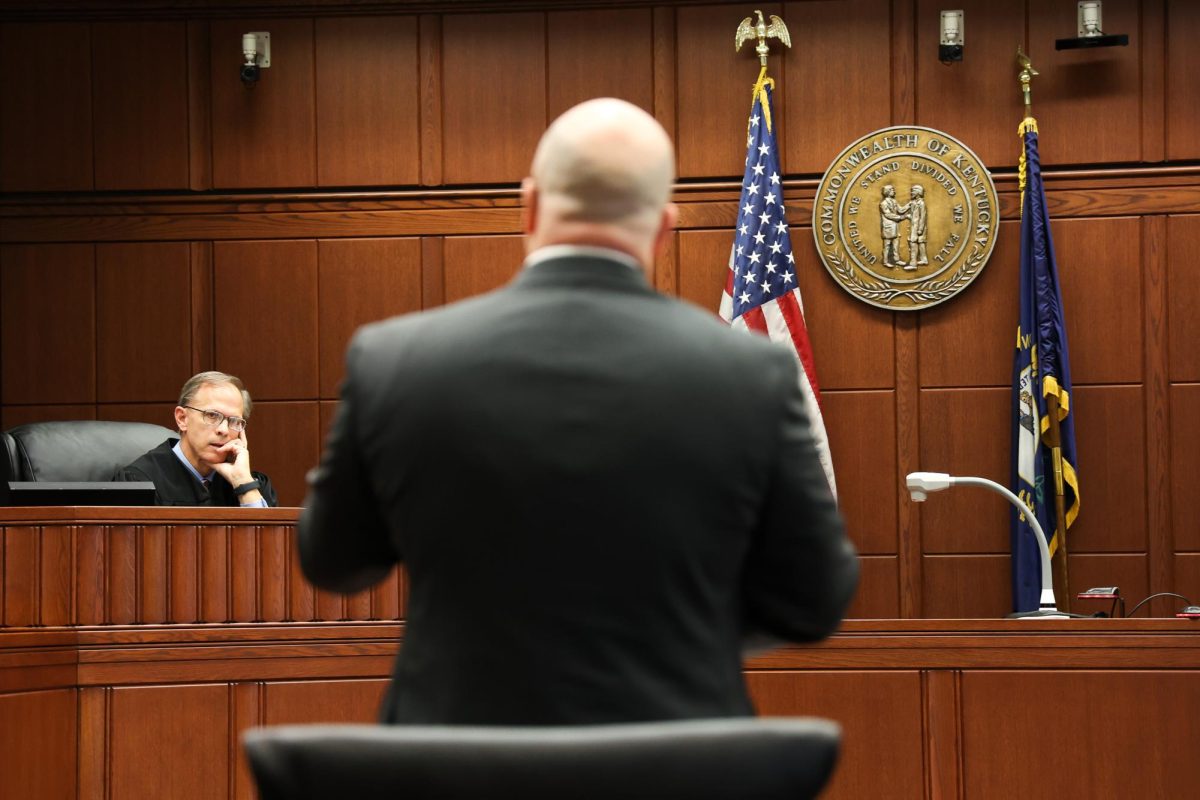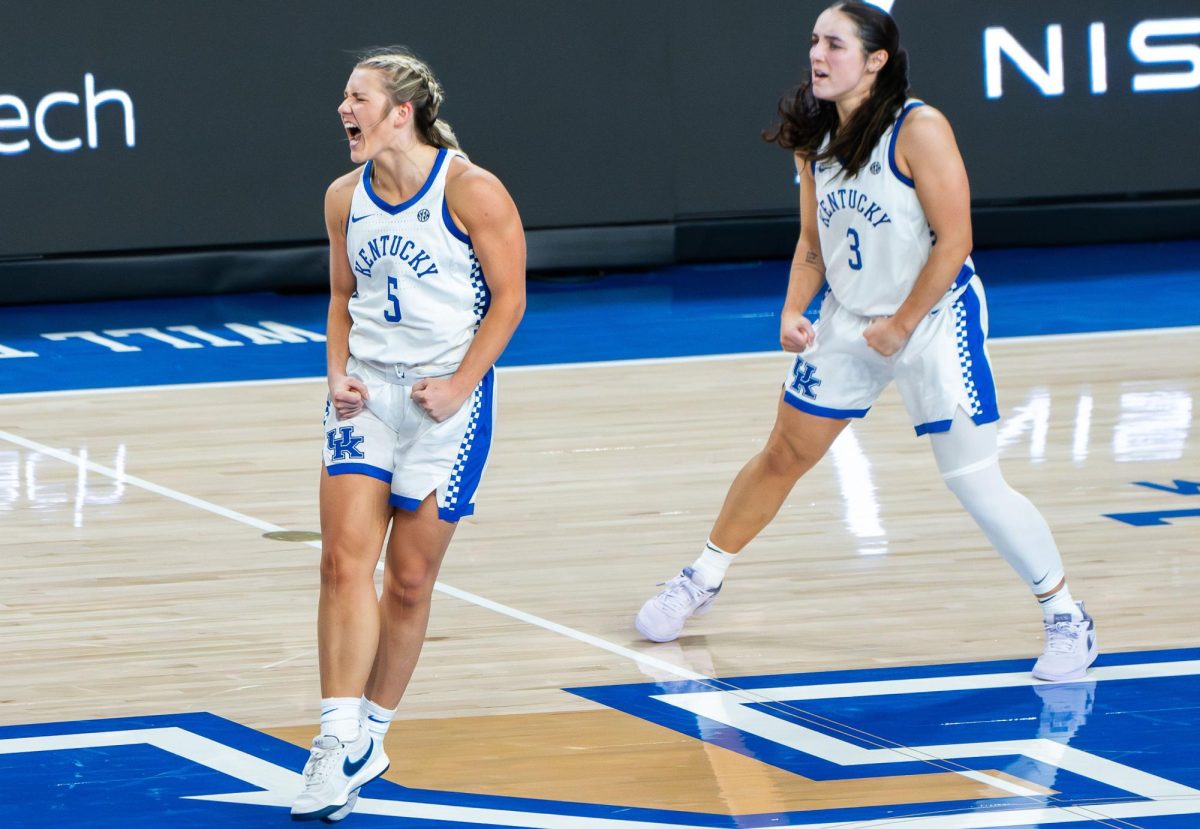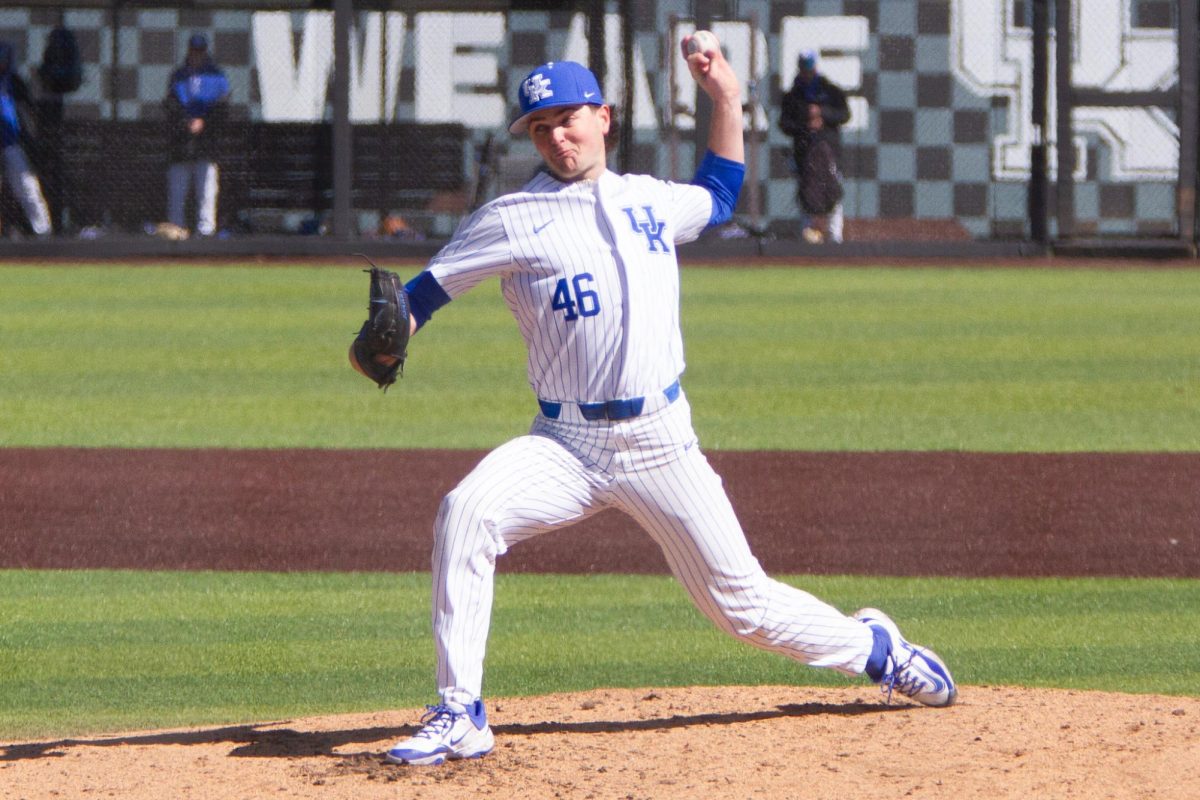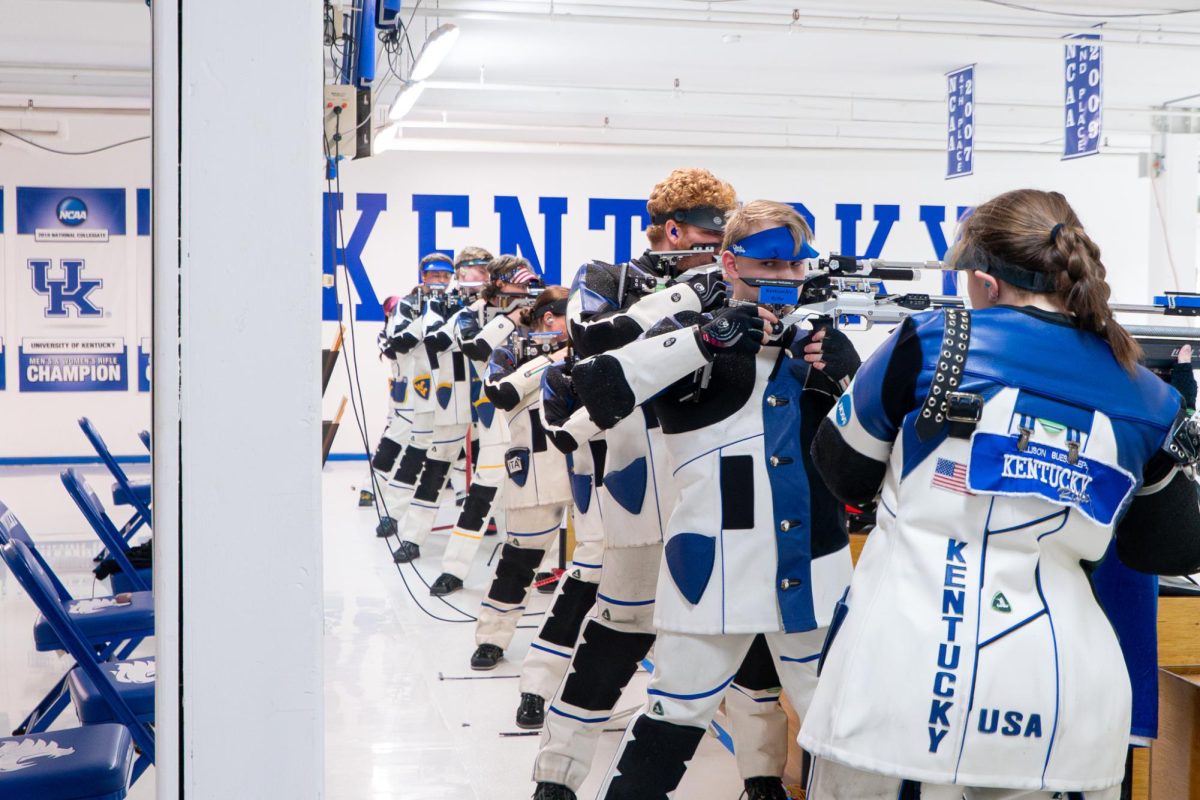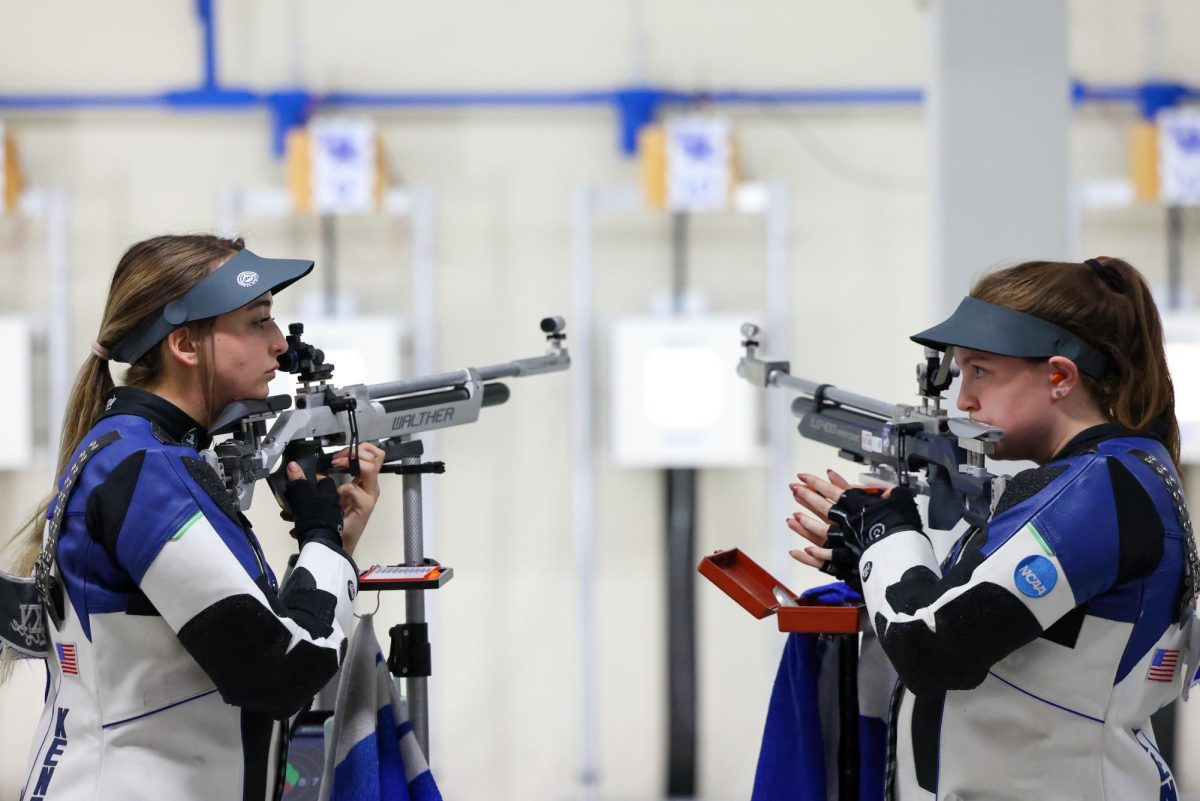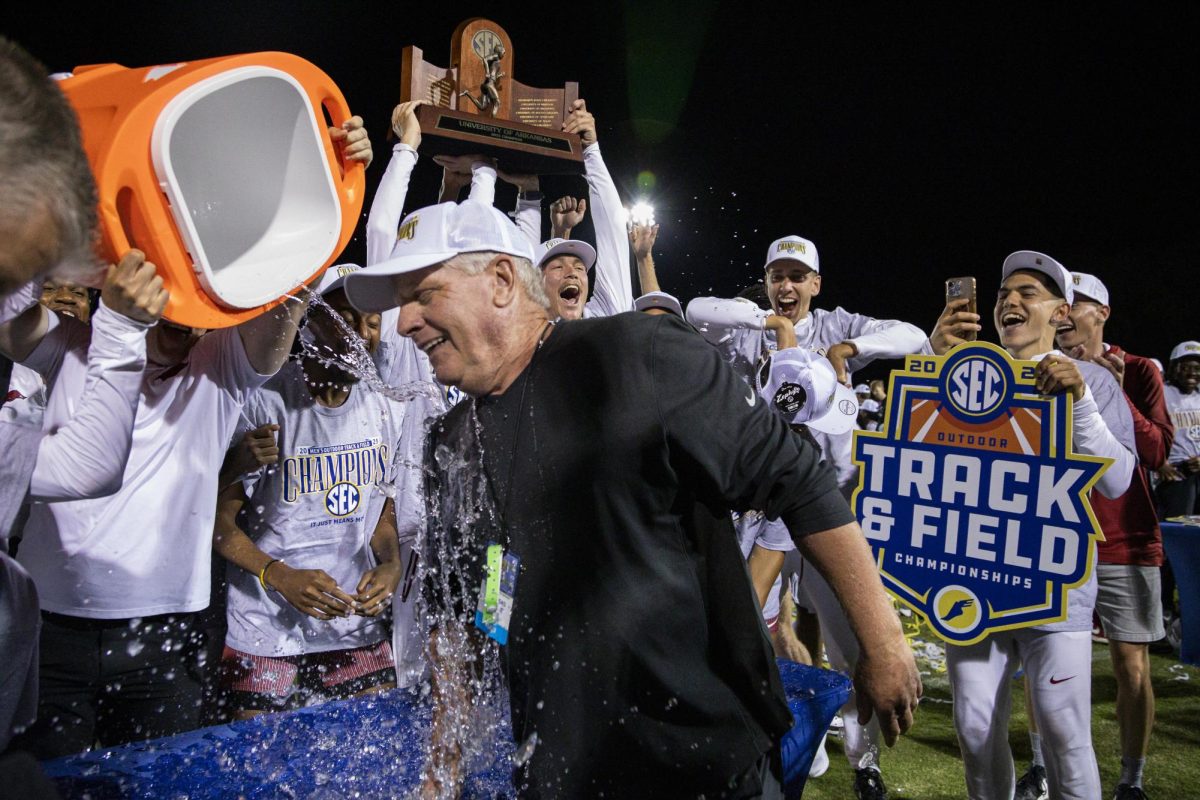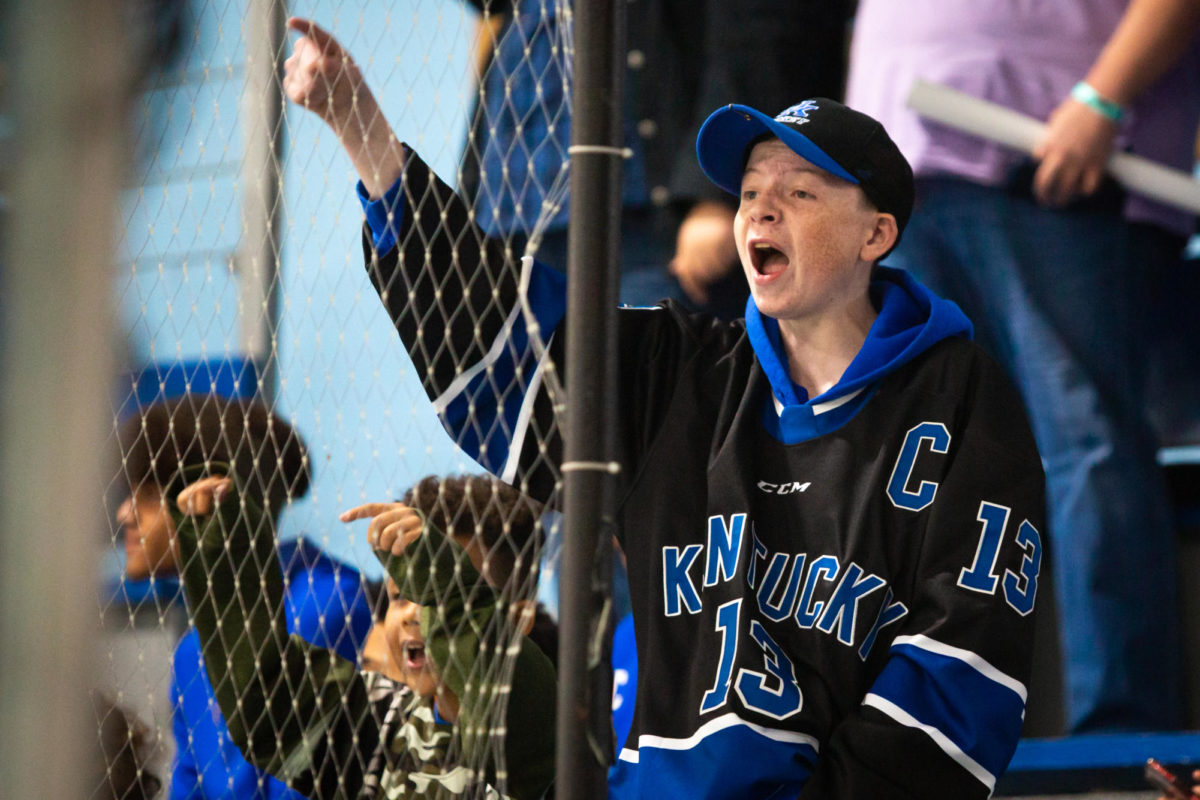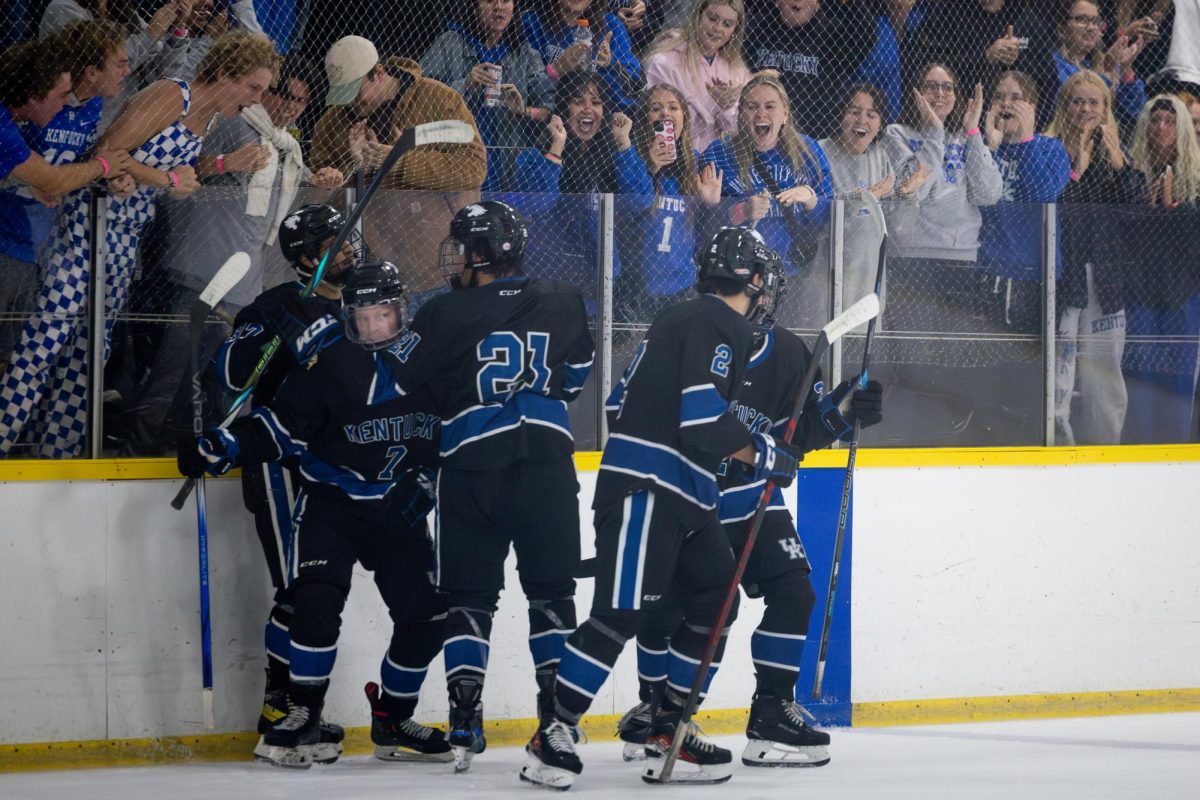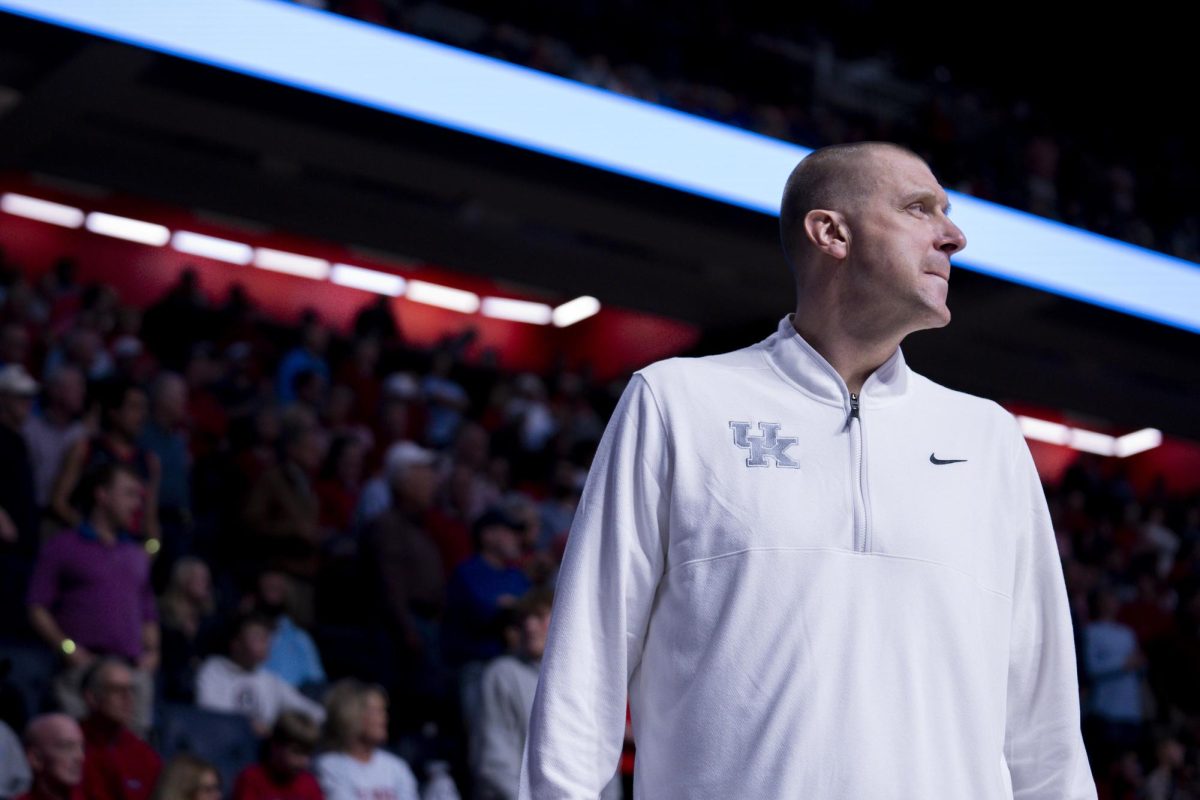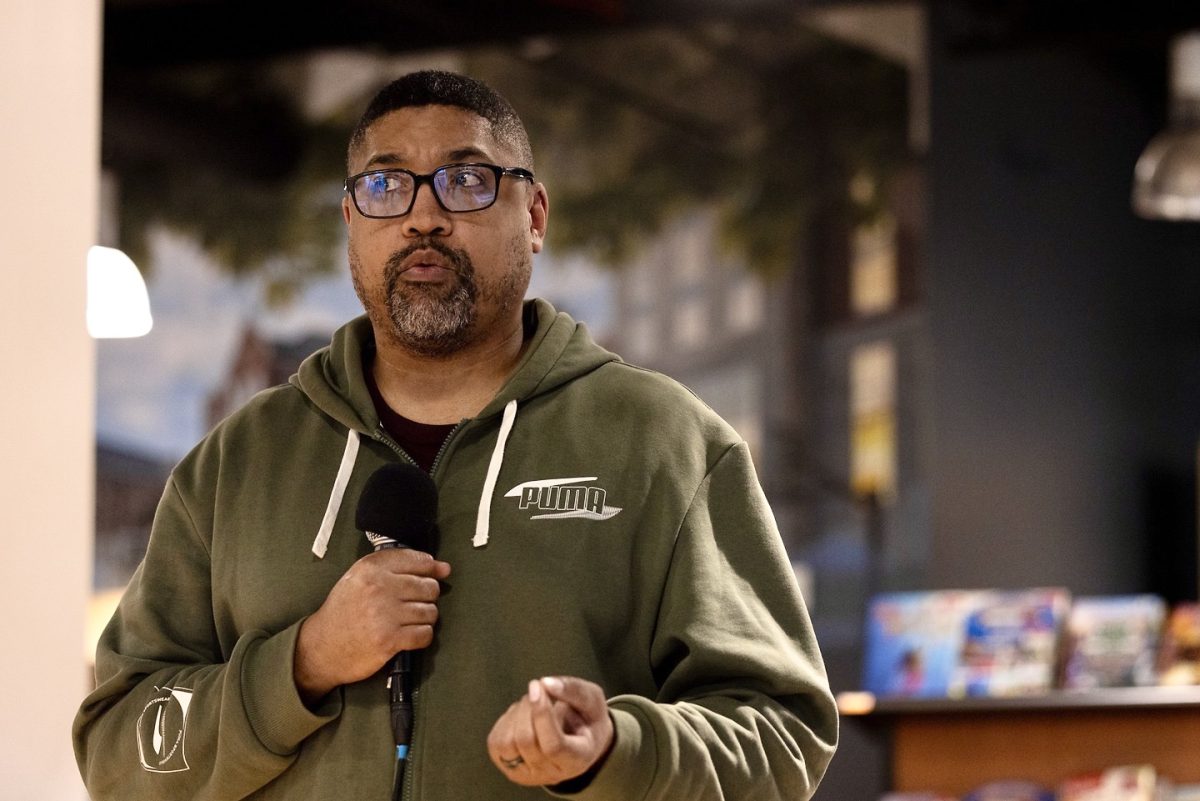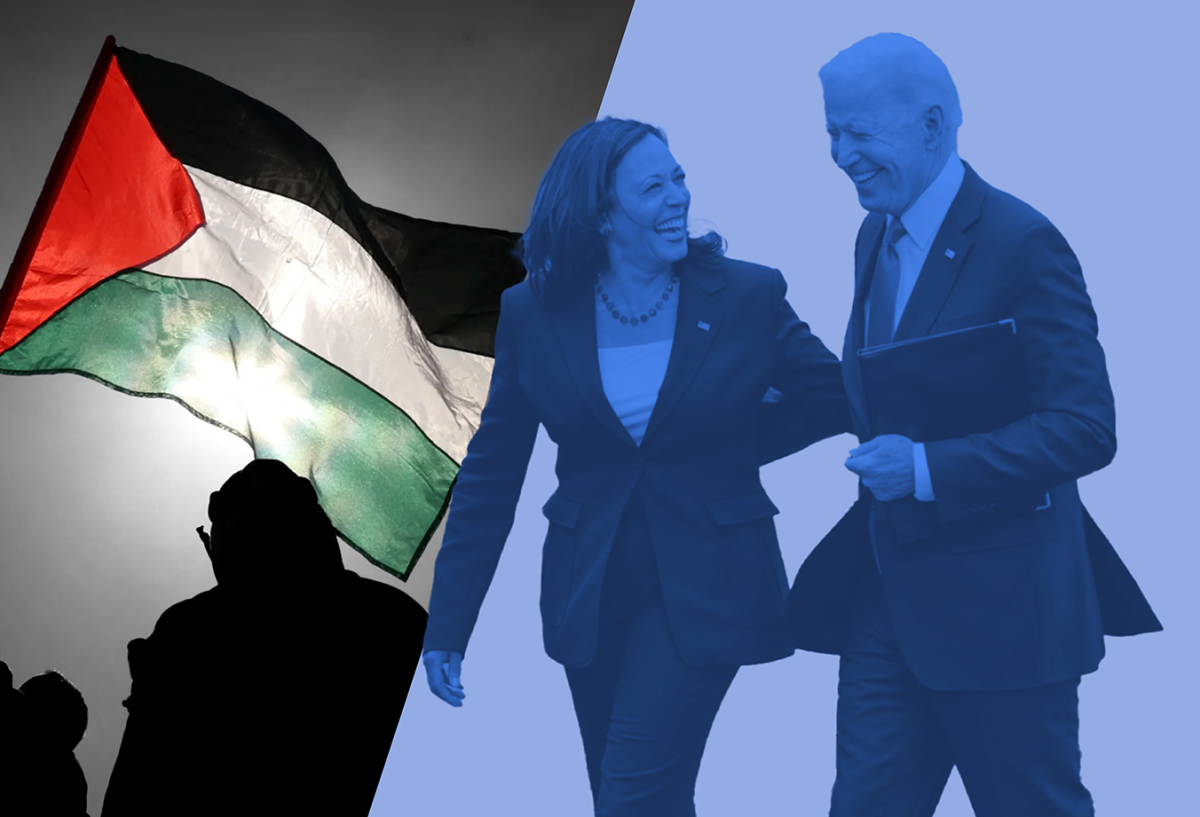Remember 9/11 by creating, uniting
This mural is in the 9/11 Memorial and Museum in New York City. This photo was taken on August 12, 2016. Bailey Vandiver | Staff
September 11, 2018
The mural stretches nearly the length of one floor of the 9/11 Memorial and Museum in New York City.
The words, forged from pieces of recovered World Trade Center steel, quote Virgil: “No day shall erase you from the memory of time.”
Surrounding those words are 2,984 watercolor drawings, each a different shade of blue. The artwork is titled “Trying to Remember the Color of the Sky on That September Morning.”
The mural, created by American artists Tom Joyce and Spencer Finch, is just one of the installations at the museum that stays with you long after you leave.
It’s been just over two years since I visited the museum, and there are many things I cannot erase from my memory.
I still remember the rush of the water at the Ground Zero Memorial, and the white rose I found adorning one of the victims’ names.
I remember standing at the top of the nicknamed “Survivors’ Stairs,” salvaged from the World Trade Center Plaza.
I remember sitting in a room long after those I was with moved on to other exhibits. In that room, audio stories about each victim were played, one after the other. I could hardly tear myself away, and I can still almost hear the echo of the loved ones’ voices in my mind.
I remember standing just feet away from one of the fire trucks used to rescue people that day.
Every part of that museum makes you proud to be an American, but what I remember the most are the things that gave me hope.
When I visited the museum, I was just days away from starting my freshman year of college as a journalism major, so the exhibits about journalists and photojournalists fascinated me and made me hopeful for my future profession. Their courage impressed me— alongside, of course, the courage of the first responders.
One photojournalist died on 9/11; his name was William G. Biggart. He wasn’t in one of the towers that day; he followed firefighters to the scene because he was intent on documenting what had happened. They found his camera after he died, film still intact.
He was not the only person documenting that day, and the museum is possible because of people like Biggart. So is our continued remembrance of the tragedy. I was just an infant and don’t remember anything about the day, but walking through galleries of photos puts you in the shoes of those who lived it. We owe a debt to those storytellers who put themselves in harm’s way.
Art— the second thing that left me feeling hopeful— was displayed everywhere in the museum. How beautiful, how unbelievably beautiful, that an overwhelming response to tragedy and death and destruction was to create something new.
It’s because of the aftermath of 9/11 that this country is worth fighting for and protecting— the art, the stories, the love, the political unity, the strength that came after.
So every time we remember this tragedy, or another tragedy comes our way, let us make a commitment to create: to create stronger bonds, to create art, to create an even better country tomorrow than we lived in yesterday.

























